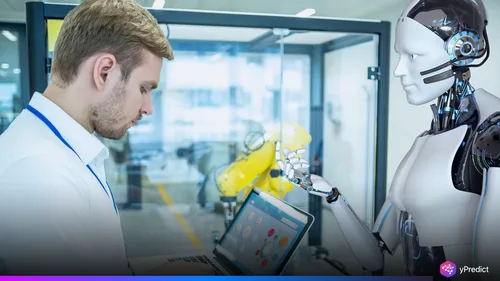
Artificial intelligence continues to progress faster than most experts imagined just a few years ago. But according to Dario Amodei, CEO of Anthropic and a leading voice in AI safety, there’s a strange twist in how AI will evolve. He predicts that future AI systems will make fewer mistakes than humans. However, when they do make errors, those errors will be weirder and much harder to detect.
While this presents an immediate problem for AI developers, regulators, and users alike, it’s also significantly more challenging. When humans make mistakes, they tend to be obvious or familiar. When advanced models produce responses, those responses will often be incoherent and often erroneous, but there is a high degree of coherence and subtlety to AI outputs and that often appear to be reliable. What’s worse is that the “mistakes” are made in a manner that is entirely confident and therefore significantly harder to raise concerns about or identify.
Why Human Mistakes Are Easier to Spot
Human errors often have identifiable tendicies. Whether through calculation, biased rank ordering or memory, we can usually identify a mistake when we notice indicators of the error – hesitation, uncertainty or inconsistency. These can help other people identify that something has gone awry and quickly help to fix the mistake.
In comparison, AI, with its polished and confident output, does not exhibit self-doubt, confusion, or deliberation. Therefore, when the AI model outputs an incorrect answer, it sounds as convincing as if it had been correct. That inherent uncertainty/value adds to the illusion of creating a an AI that is imagine is much more reliable than it is. The illusion will only be exacerbated as models advance and AI reasoning appears that much more acute and capable.
Dario Amodei’s Warning About Deceptive Confidence
Dario Amodei’s warning isn’t just about frequency, it’s about quality. He suggests that AI mistakes in the future won’t just be rarer, they’ll be stranger. That is, they won’t look like traditional errors. Instead, they’ll be failures of deep reasoning that still appear logically sound on the surface.
He uses an important analogy: with humans, you can tell when someone is wrong. But AI will be different. Its mistakes will look and sound like well-reasoned facts. This means you’ll need a much deeper understanding of the subject, or even a second system, to catch the error. This dynamic could be especially dangerous in areas like healthcare, law, and policy, where the cost of a mistake is very high.
How Machine Learning Risks Could Escalate
The field of machine learning risks already includes concerns like hallucination, bias, and misalignment. But Amodei’s statement introduces a new layer: errors that are subtle, coherent, and hard to distinguish from truth. These mistakes could escape notice in high-stakes situations, especially when users trust AI too much.
Such risks make explainability and transparency crucial. If a model’s AI reasoning cannot be easily examined, then even small errors could create large-scale harm. In fact, some of the worst AI mistakes in the future might not even look like mistakes at first glance, they may just blend in as “plausible but wrong” answers.
Why Humans Might Trust AI Too Much
As AI models outperform humans in many domains, people may begin to rely on them excessively. When something always seems right, the natural tendency is to stop questioning it. That’s exactly what makes the next generation of AI mistakes so dangerous.
Humans already exhibit automation bias, the tendency to believe a machine over their own judgment. When future AI appears more intelligent, we’ll likely trust it even more. But with that trust comes the risk of manipulation, false certainty, and deeply embedded errors that go unnoticed for long stretches.
What This Means for the Future of AI Development
It is crucial for developers to build AI systems that are not only effective, but also explainable and justified. Additionally, we need tools that can audit, or validate, an AI’s logic and reasoning in situ. Otherwise, we run the risk of developing mistakes that may not be acknowledged until they are perpetuated to such a degree that even domain experts may be unaware of them.
We will need to become experts in transparency, interpretability, and verification. As our knowledge on the risks associated with machine learning systems evolve, so should the methods employed to detect and mitigate those risks. Collaboration together as regulators, companies, and researchers is an important part of compelling AI models to remain responsible, not merely accurate.






